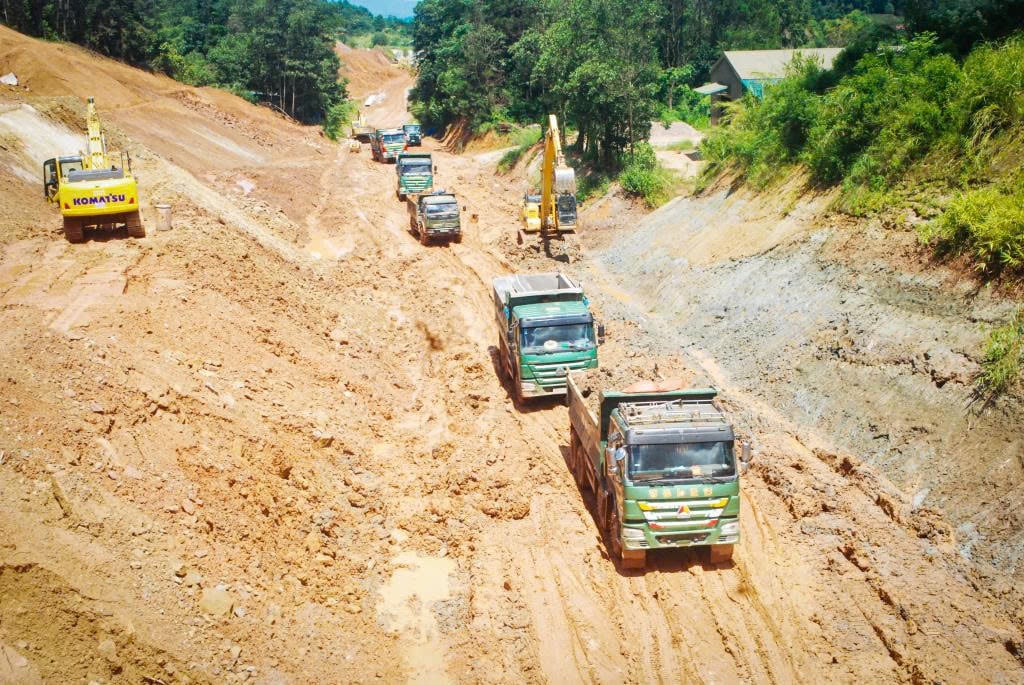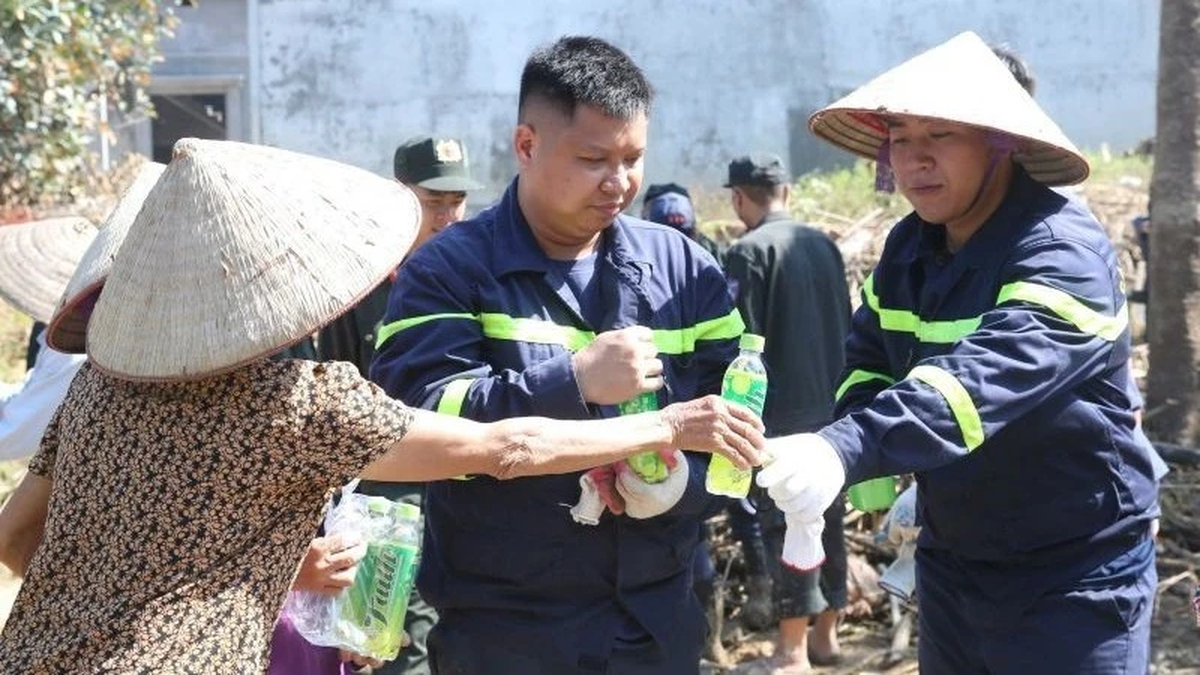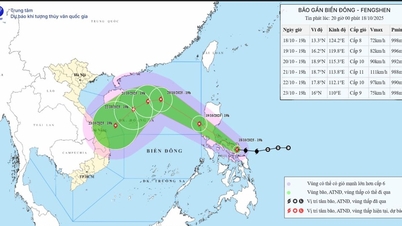Alarming situation
Low disbursement figures not only reflect the progress of public investment, but also show the depth of management capacity and reform spirit in the local administrative apparatus.
At the recent question-and-answer session of the Provincial People's Council, the issue of slow disbursement of public investment was once again raised frankly. This is not a new topic, but it is a "deep-rooted" disease when for many years, Cao Bang 's disbursement rate has always been among the lowest in the country, even though capital sources have been given priority attention by the Central and local governments.
Up to now, many projects in the province are still behind schedule, even at risk of not being able to fully disburse capital within the planning year. A part of the investment capital has been allocated but cannot be implemented due to problems in the adjustment, extension or unfinished site. Some large projects may have to transfer resources or request an extension of implementation time, but do not have enough conditions to do so according to regulations.
This situation not only reduces the efficiency of budget use, but also directly affects growth momentum and the confidence of investors, businesses and people in the management work.

Unresolved knots
Since April 2025, the province's disbursement rate has improved, but the root causes that Provincial Party Secretary Quan Minh Cuong pointed out have not been overcome. First of all, the management mindset is still more focused on capital management than investment management. Many units are still in a state of "waiting for instructions" and "waiting for opinions", not really proactive in grasping the situation and proposing solutions early. It can be said that the habit of waiting for requests - waiting for approval - waiting for instructions has created administrative inertia, making the apparatus operate slowly and dependent on procedures, instead of proactively following goals.
Investment preparation is still unscientific and unprofessional. Many projects are hastily established to meet capital plans, the total investment is not close to reality, and must be adjusted many times, leading to consequences such as capital increase, delayed approval, and even extension for many years. There are projects that are almost over but only the site has been counted, but the capital has been fully allocated, leading to a paradox: the excess cannot be used, the needed capital is not available, and "flexible regulation" becomes an impotent slogan.
Design consultancy, supervision and contractor selection are still weak. Some projects are awarded bids due to low prices or signs of familiarity, leading to poor construction, slow progress, and even having to replace contractors midway. Many investors do not have a professional project management team, and do not have the capacity to handle on-site situations, while the coordination mechanism between sectors still lacks connectivity and clear responsibilities.
Another factor is the fear of making mistakes and the culture of “safety” in public service. Many officials are afraid to sign, afraid to make decisions, afraid of inspection and audit, so they choose to “play their part” instead of daring to do. The so-called “stability” is actually a slow stability, when everything goes according to procedure but does not lead to results.
The disease of old inertia
The above phenomena are not the fault of any individual, but the result of institutional inertia that has lasted for many years. When the machine operates in the old way for too long, people get used to doing things the old way, get used to safety, then even with new policies and new instructions, the system still has difficulty moving. Like an old machine, the more it is lubricated, the more its internal sluggishness is revealed.
Meanwhile, other provinces such as Quang Ninh, Hai Phong , etc., with the same institutions and legal systems, always achieve high disbursement rates. They do not have more in terms of mechanisms but more in terms of the spirit of organizing actions and implementing discipline. The leaders directly hold meetings, clearly assign responsibilities, and handle problems weekly, not letting "small things wait to become big things".
Our province has also made changes in management: this year's capital was delivered early and allocated promptly, but the problem is no longer the capital delivery stage, but the quality of preparation, organization and supervision. Improving consulting capacity, ensuring truly independent supervision, carefully preparing the site, not adjusting policies or extending projects, that is the condition for capital to be effective.
New lessons and requirements
Looking back, the big projects that are stuck, even at risk of losing capital, have common points: lasting 3-4 years, adjusted many times, no land yet, high proportion of central capital. Time is almost up but construction volume is very low. Capital allocation exceeds absorption capacity, leading to a cumulative effect at the end of the year without implementation capacity.
In that context, all administrative solutions of the type of “review - decentralization - working group” are no longer effective immediately, because there are no more projects that can absorb more capital this year. What our province needs to do now is to accelerate the remaining part to the maximum and draw profound experience for the new medium-term period.
Create powerful movement in action
Secretary of the Provincial Party Committee Quan Minh Cuong once said: “Disbursement of public investment capital is a test of the management capacity of local authorities.” From April 2025 to now, that warning remains valid. The problem is no longer a lack of policies or guidance - but the delay in implementation and the spirit of taking responsibility at many levels has not kept up with the requirements of innovation. A correct policy is only valuable when it is turned into concrete, resolute and thorough actions. From inertia to action “One person cannot push, many people hold.”
The spirit of innovation, daring to think, daring to do has been strongly initiated, but to become the real strength of the system, it must spread to every stage and every implementer. When each level and each sector shares responsibility and moves together, our province can overcome old inertia, from management thinking to creative action, turning "stability in slowness" into stability in development - where discipline, efficiency and service spirit become a common culture of action.
Source: https://baocaobang.vn/giai-ngan-cham-can-benh-khong-con-cua-rieng-ai-3181427.html




![[Photo] General Secretary To Lam attends the 95th Anniversary of the Party Central Office's Traditional Day](https://vphoto.vietnam.vn/thumb/1200x675/vietnam/resource/IMAGE/2025/10/18/1760784671836_a1-bnd-4476-1940-jpg.webp)

![[Photo] Collecting waste, sowing green seeds](https://vphoto.vietnam.vn/thumb/1200x675/vietnam/resource/IMAGE/2025/10/18/1760786475497_ndo_br_1-jpg.webp)
![[Photo] Closing ceremony of the 18th Congress of Hanoi Party Committee](https://vphoto.vietnam.vn/thumb/1200x675/vietnam/resource/IMAGE/2025/10/17/1760704850107_ndo_br_1-jpg.webp)
































































































Comment (0)